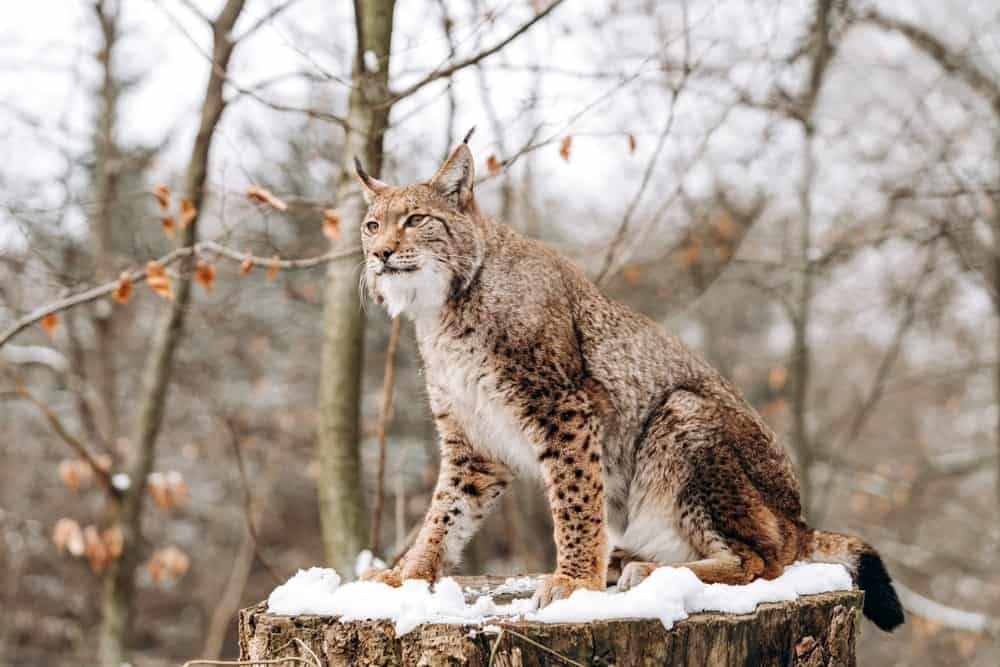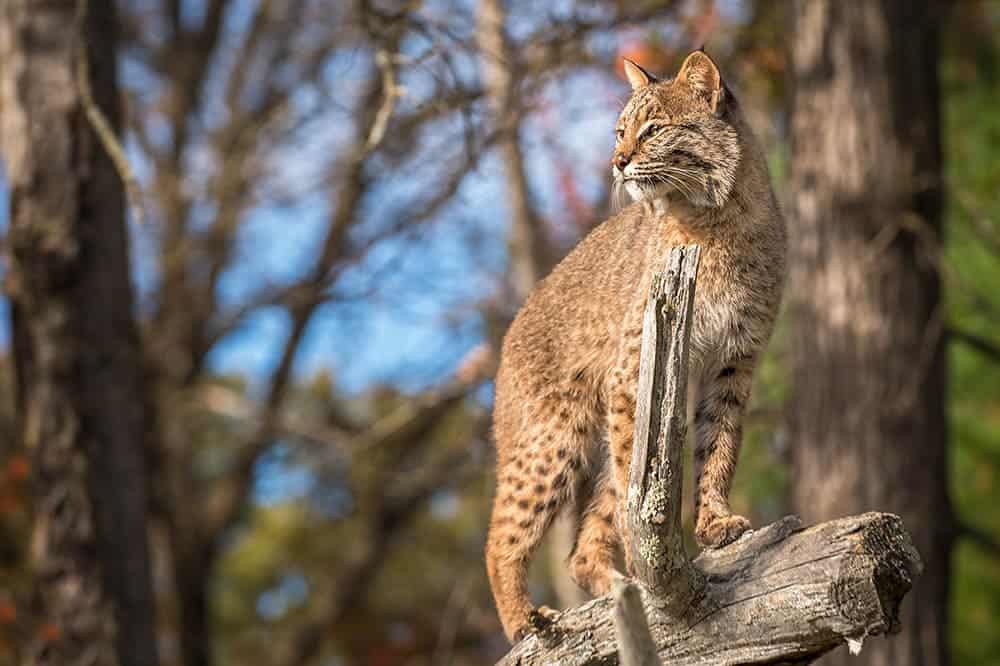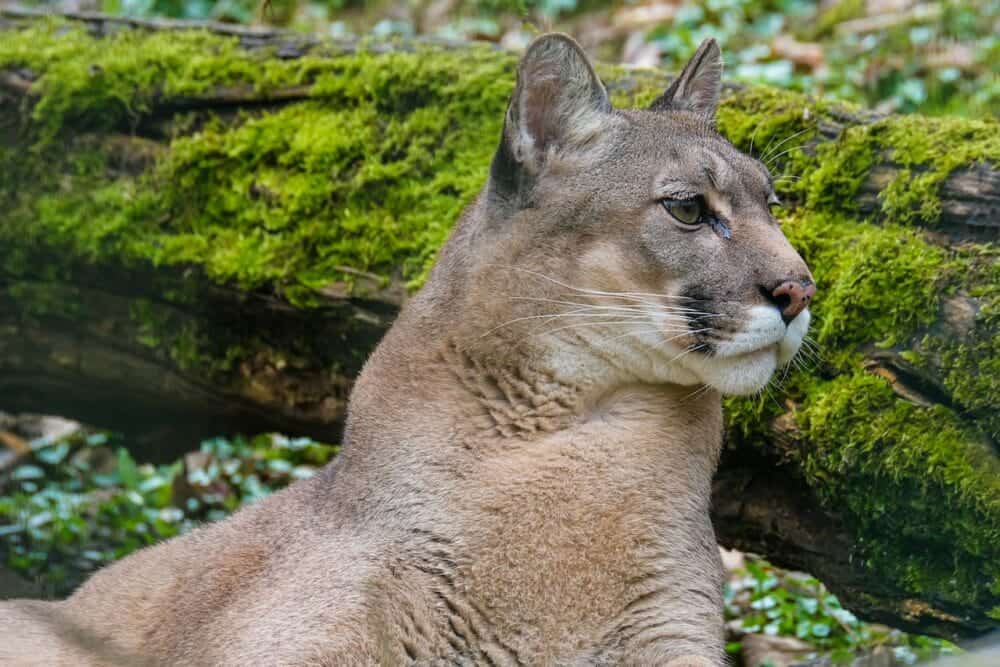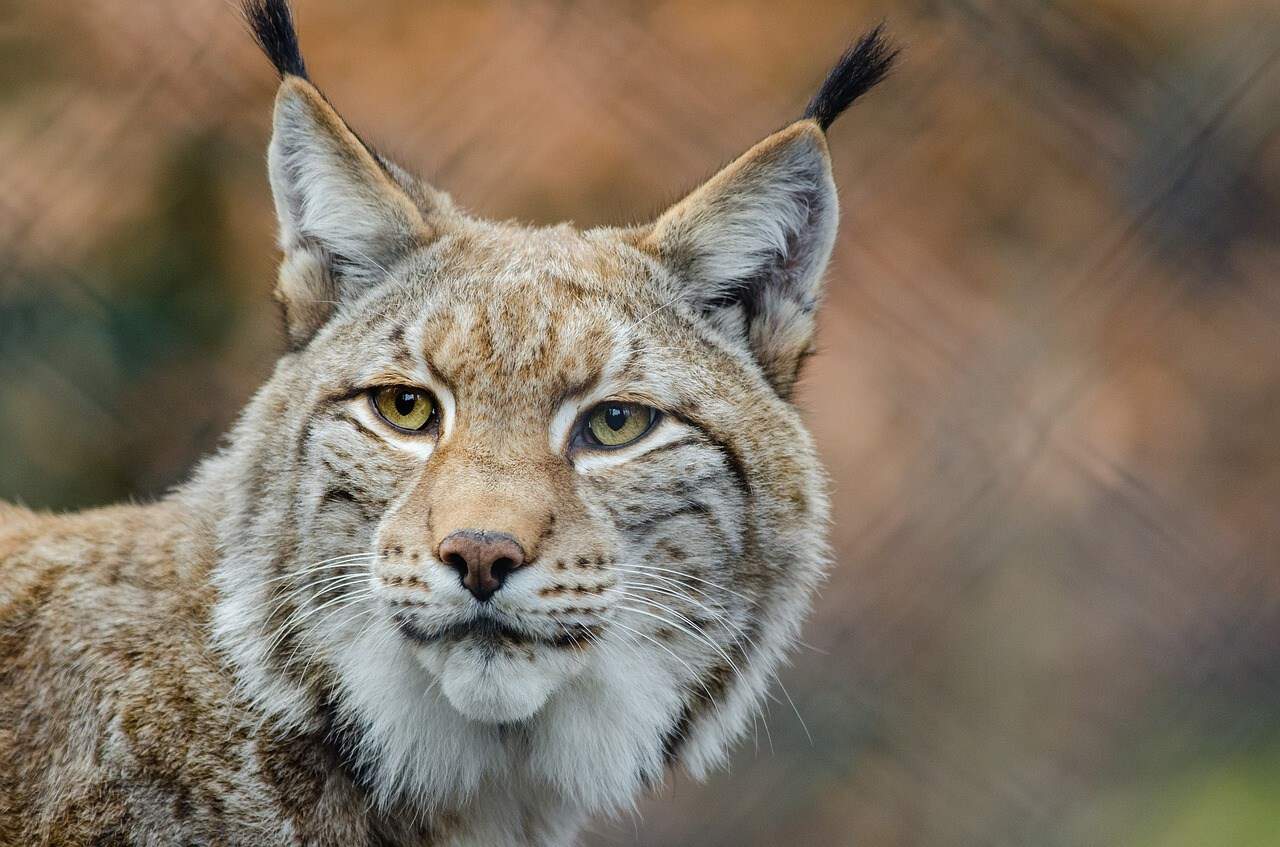Domestic cats are so cute and cuddly that sometimes we forget that cats are predators. Wild cats seem to have few similarities to our pets that play with laser pointers in our living rooms.
Though there have been some peculiar large cat sightings, for the most part, it is agreed upon that there are very few large cats in Michigan. There are two confirmed wild cats in Michigan, with a third potential wild cat that lived in Michigan long ago and has only had sporadic sightings.

The 3 Types of Wild Cats in Michigan
1. Canada Lynx

| Lifespan: | 10–20 years |
| Length: | 2.5–3.5 feet |
The Canada Lynx is a medium-sized wildcat that thrives in the northern regions of North America. They were declared an endangered species in 2000 due to over-trapping, habitat loss, and global warming.
For the past 40 years, there have been rare sightings of the Canada Lynx in Michigan. Since 2003, Michigan State University has reported 3 separate sightings of the wild cat. It is believed that the Michigan Canada Lynx population is more concentrated around Isle Royale, a national park near Lake Superior.
2. Bobcat

| Lifespan: | 7 years |
| Length: | 19–49 inches |
Bobcats are spotted brown cats often confused with the Canada lynx due to similar features. However, bobcats are usually smaller than the Canada Lynx and tend to stay in slightly warmer climates. Bobcats are fascinating animals that are skilled at climbing and running. When they run, they can reach speeds of up to 30 miles per hour.
Due to an increase in logging in the 1800s, the bobcat vanished from the lower peninsula of Michigan. Though it is starting to make a comeback in the lower peninsula, the upper peninsula is seeing a population decrease.
3. Cougar

| Lifespan: | 8–13 years |
| Length: | 6.7–7.9 feet |
A cougar, also known as a mountain lion, is a strong and solitary creature. However, it is uncommon for cougars to wander into human settlements, even densely populated ones. Although these instances are often brief and without consequence, there have been times when a cougar and a human encountered each other.
Cougars can weigh up to 180 pounds. They are about 30 inches tall at the shoulder and can be 8 feet long from the nose to the tail. Talk about a giant cat! Though there have been some confirmed cougar sightings in 2008, it is believed that most cougars no longer occupy Michigan.

What to Do if You Encounter a Wild Cat
Although it is unlikely that a wild cat will attack you, it can still be intimidating to come face to face with such a creature. So, if that happens, what do you do? The best thing you can do is stay calm. If you turn around and run, the cat’s predatory instincts may kick in and cause it to chase you.
If you have a child or pet with you, slowly pick them up. Try not to bend over or move quickly, as this could give the cat the impression that you are threatening it. If you are near a building or car, slowly back toward it and get inside.
This should be enough to make the cat uninterested and unthreatened by your presence, but if the cat still seems hostile, wave your hands over your head to appear larger. Make loud, low shouts to scare it off. Throwing things at the cat may also work. Do not charge at the cat, and if the cat attacks, do not pretend to be dead. Fight back.
Most of the time, a wild cat will not attack you. It is more likely to continue on its way or turn and leave.
Who to Contact
If you want to report a wild cat spotting, you can do so at the website for Michigan’s Department of Natural Resources.

Conclusion
The thought of large, wild cats in the woods may sound scary, but the cats generally keep to themselves. Although Michigan has few large felines, you may be lucky enough to spot one from a safe distance. As long as you are prepared and informed, conflicts with the cats should be few and far between.
Featured Image Credit: skeeze, Pixabay
